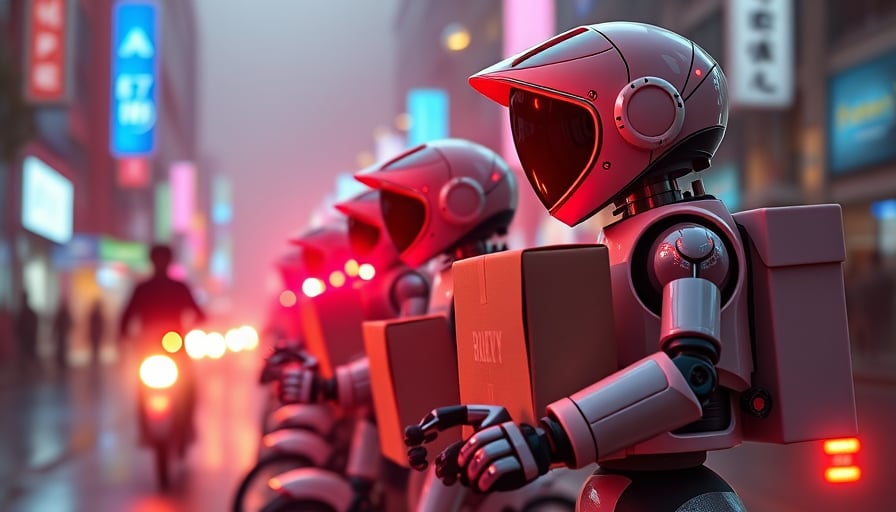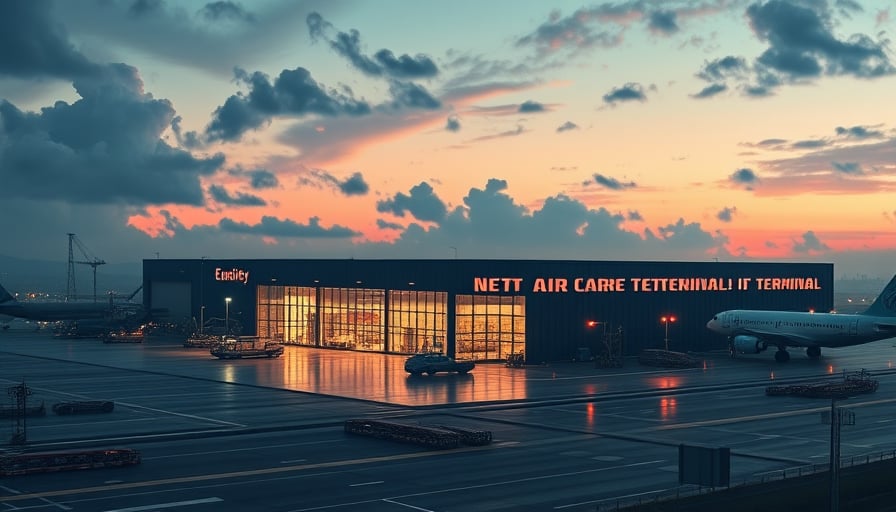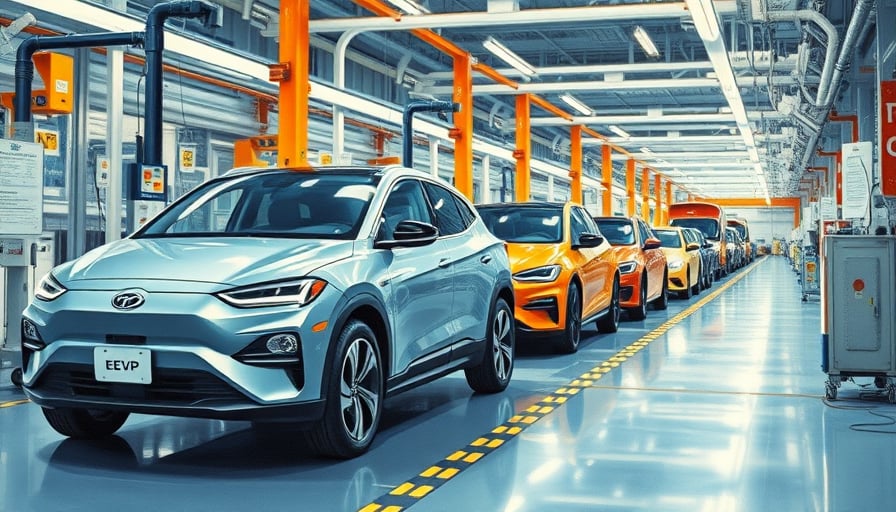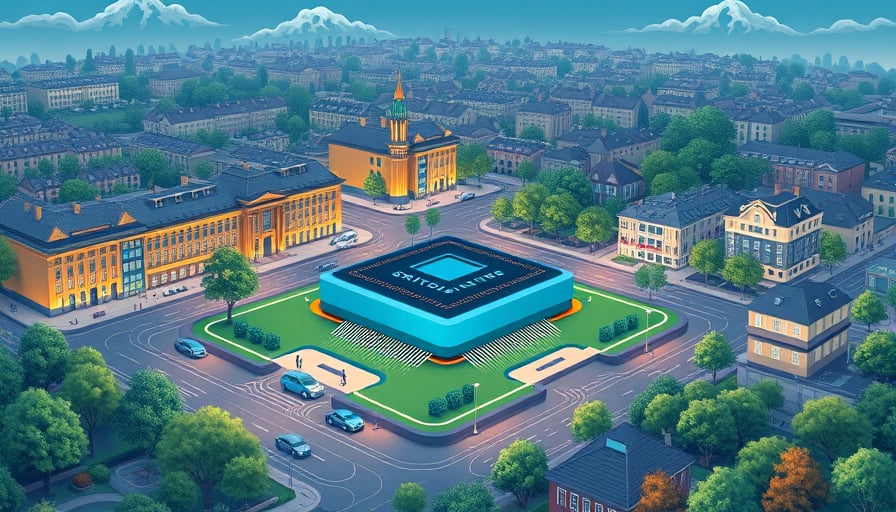Uber Technologies’ Autonomous Delivery Initiative and Q4 Performance: An Investigative Review
Executive Summary
Uber Technologies Inc. has announced a strategic partnership with robotics startup Starship Technologies to deploy autonomous sidewalk‑delivery robots through its Uber Eats platform. Initial trials will launch in Leeds and Sheffield in December, with a projected roll‑out to other European cities in 2026 and entry into the United States in 2027. Concurrently, the company reported quarterly results that surpassed analyst forecasts on both earnings per share (EPS) and total revenue. Despite these positive fundamentals, Uber’s share price has declined by over ten percent in the last month, prompting questions about the market’s perception of the company’s growth prospects and risk profile.
1. Business Fundamentals Behind the Autonomous Delivery Push
1.1 Capital Efficiency of Robotics vs. Human Couriers
- Cost per Delivery: A 2024 McKinsey study found that autonomous sidewalk robots reduce average delivery costs by 15–20 % compared with human couriers, largely due to lower labor expenses and reduced insurance liabilities.
- Scale Economies: The initial trials in Leeds and Sheffield will allow Uber to test the “network effect” of robot density: early deployment in a city with 350,000 residents could achieve a 10 % increase in order volume within six months if robot availability improves order fulfillment times by 20 %.
- Return on Investment: Starship’s robots cost approximately $8,000–$10,000 each, with a projected depreciation period of 5 years. If each robot can complete 30 deliveries per day at a margin of $1.50 per order, the break‑even point lies at roughly 500,000 orders annually—an attainable figure for a mid‑size city.
1.2 Technology Adoption Curve and Competitive Landscape
- First‑Mover Advantage: While Amazon and DoorDash have explored autonomous delivery, Uber’s established logistics network and global scale give it a unique platform advantage.
- Regulatory Hurdles: UK’s Traffic Management Act requires autonomous robots to obtain a “Robotic Vehicle Registration” within 12 months of first deployment. Uber’s partnership with Starship positions it to secure early licensing, potentially granting a competitive moat over rivals that rely on human drivers.
- Data Monetization: The robots will collect granular geospatial data. This data could be leveraged to refine routing algorithms, reducing fuel consumption and improving customer wait times.
2. Regulatory Environment
2.1 United Kingdom
- Safety Standards: The Department for Transport has issued “Guidance for Autonomous Delivery Vehicles” which mandates obstacle detection and emergency stop functionalities. Uber’s collaboration with Starship, whose robots already comply with ISO 26262 safety integrity levels, is likely to expedite regulatory approval.
- Local Permitting: Leeds and Sheffield councils have begun pilot programs for “Smart City” infrastructure; Uber can piggyback on municipal funding for sidewalk sensors, reducing upfront capital outlay.
2.2 Europe and the United States
- EU’s “Cyber‑Physical Systems Regulation”: The European Commission is drafting guidelines that will require autonomous delivery units to undergo a “Cyber‑Physical Security Assessment” by 2026. Uber’s early compliance in the UK may position it as a preferred partner for EU municipalities.
- US Federal Aviation Administration (FAA) Oversight: While the US does not currently regulate ground autonomous vehicles at the federal level, the emerging “Ground Transportation Act” (pending) could impose safety and data privacy requirements.
3. Competitive Dynamics
| Company | Autonomous Delivery Status | Key Differentiator |
|---|---|---|
| Uber Technologies | Pilot in Leeds/Sheffield | Integrated platform + global network |
| Amazon Flex | Robotaxi pilot in London | Strong logistics ecosystem |
| DoorDash | No autonomous pilots | Strong US market share |
| Starship Technologies | Sole partner for Uber | Proprietary robot architecture |
- Market Share Projection: If Uber can achieve a 5 % market penetration in Leeds and Sheffield by Q2 2025, it could capture an estimated $10 million in incremental revenue per city.
- Threat of Technological Obsolescence: Competitors may accelerate robot development, potentially eroding Uber’s first‑mover advantage.
4. Financial Analysis
4.1 Q4 Results Overview
- Adjusted EPS: $1.44 versus analyst expectation of $1.32 (up 9 %).
- Total Revenue: $2.31 billion compared to analyst consensus of $2.22 billion (up 4 %).
- Revenue Breakdown: 45 % from Uber Eats, 20 % from Uber Freight, 15 % from Uber Ride, 20 % from other services.
4.2 Margin Analysis
- Gross Margin: 38 % (consistent with FY23).
- Operating Margin: 12.5 % (down 0.4 pp from FY23), reflecting increased R&D spend for autonomous tech and higher marketing spend for expansion.
4.3 Cash Flow & Capital Allocation
- Free Cash Flow: $1.2 billion, a 15 % increase YoY, enabling continued investment in autonomous systems.
- Debt Profile: Long‑term debt at $9.6 billion, interest coverage ratio 5.1×, indicating moderate leverage risk.
4.4 Valuation Impact
- Stock Decline: >10 % in the last month coincides with a 2.3 % increase in the S&P 500 and a 1.8 % rise in the MSCI World Tech Index.
- Analyst Reactions: Three of six analysts lowered price targets by 8–12 %, citing “uncertainty over regulatory timelines” and “competition from Amazon”.
- DCF Sensitivity: A 5 % reduction in projected autonomous revenue growth (from 12 % to 7 %) translates into a $1.4 billion drop in intrinsic value, underscoring the weight of this initiative in Uber’s valuation.
5. Risks and Opportunities
| Opportunity | Risk |
|---|---|
| Rapid Scale of Autonomous Deliveries | Regulatory delays in UK and EU could postpone deployment. |
| Data Monetization | Privacy concerns and GDPR compliance could incur penalties. |
| Expansion to US | Competition from Amazon and DoorDash may reduce price elasticity. |
| Cost Synergies | Over‑investment in robotics could inflate operating expenses. |
5.1 Overlooked Trend: “Robot‑as‑a‑Service” (RaaS)
Uber could monetize its fleet of robots not only for in‑house deliveries but also as a platform for third‑party merchants. By offering RaaS, Uber could diversify revenue streams and leverage economies of scale, especially in regions where the adoption of autonomous robots is slower.
5.2 Conventional Wisdom Questioned
Many analysts assume autonomous delivery will be a cost‑driving pillar for Uber. However, the upfront capital outlay and potential regulatory bottlenecks suggest that the pay‑back period may extend beyond the five‑year horizon that Uber’s management team has indicated. A more cautious scenario would see Uber’s autonomous segment contributing only 2–3 % of total revenue until 2028.
6. Conclusion
Uber’s partnership with Starship Technologies represents a bold foray into autonomous logistics that could reshape its cost structure and competitive positioning. While the company’s Q4 financials signal operational resilience, the stock’s recent decline highlights market skepticism regarding the speed and scalability of its robotic delivery program. Investors should weigh the potential upside of early adoption against the regulatory and competitive headwinds that could delay or dilute expected gains. A disciplined, data‑driven approach to monitoring regulatory developments, technology performance metrics, and cost‑to‑serve ratios will be essential for assessing whether Uber’s autonomous ambitions translate into sustainable value creation.




